Have you Googled your vacation rental website lately?
Few people look past the first few results these days, so if you end up at the bottom of the pack, you’re most likely missing out on potential guests.
Every month, tens of thousands of people search for the term “vacation rental,” and with a good SEO strategy, you could improve your ranking and drive more traffic to your property website.
If you have no idea how to rank your vacation rental website in the first position to attract more guests, stick around as we break down nine easy-peasy vacation rental SEO tips to boost your visibility online. But before we begin…we have a gift for you! Download our Complete Guide to SEO for Vacation Rentals and get to position number one on Google!
The importance of short-term rental SEO
Unfortunately, having a killer property and a stunning website isn’t enough these days.
And while there are a few basic vacation rental SEO tips you’ll find on every how-to article online, SEO is as changeable as the ocean tides. If you’re not keeping up, you’re falling behind.
But why is vacation rental SEO so important, especially in 2024?
Here are three main reasons why (although there are endless other benefits of creating a property management SEO strategy, especially if you manage multiple properties in the same area).
Increased online visibility
The first major benefit of vacation rental SEO? It boosts your online visibility.
By optimizing your website with relevant keywords, you increase the chances of appearing in search results when potential guests are hunting for their next vacation spot.
Higher-quality traffic
SEO isn’t just about visibility—it’s about attracting the right kind of attention.
With a well-crafted strategy focused on SEO for holiday rentals, you attract quality traffic. That is, people who are genuinely interested in vacation rentals like yours.
This ties back to search intent, which we’ll explore more below. However, the benefit is that, if done correctly, you can immediately capture the attention and interest of niche guests, like those looking for a “cute cabin near Dollywood.”
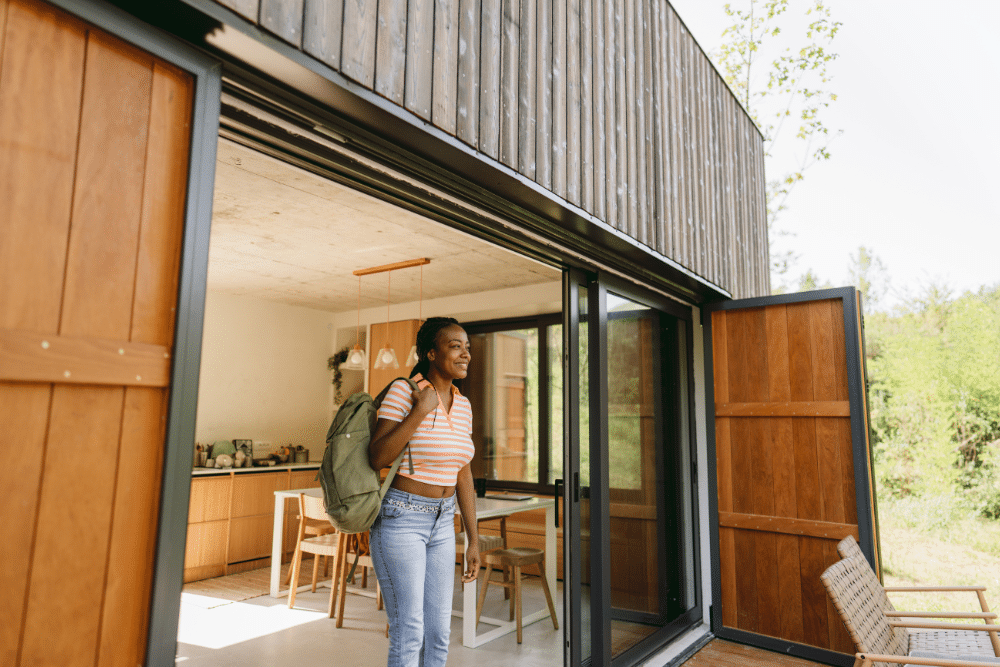
Enhance user experience
SEO can significantly improve the experience users have when navigating your vacation rental website.
From fast loading speeds to easy navigation, a well-optimized website ensures guests stick around longer, increasing the chances of securing bookings.
SEO for vacation rentals: 9 tips for success
If you’re here, it probably means you’re a property manager or vacation rental owner with your own professional website.
If that’s not the case, there are plenty of tools you can use to build your own vacation rental website quickly and easily—such as Lodgify.
Once you’ve done that, it’s time to optimize your website for search engines. Higher rankings mean more traffic, leading to increased bookings. Aim to be in the top three results for maximum conversion.
Ready to boost visibility? Here are nine simple SEO tips for vacation rentals and the property managers who manage them.
1. Understand search intent
Search intent is all about understanding what users hope to find when they type in specific search terms. It’s a crucial part of SEO because if you can anticipate the needs of potential guests, you can tailor your content to fulfill those needs.
For example, let’s say you’re a vacation rental owner in Miami. You might use keyword research tools like Ahrefs, Semrush, or Keyword Insights to discover that many people search for “beachfront vacation rentals in Miami.”
When looking at the search results, it’s clear what the intent is—people want a rental that’s right on the beach. This is because the results show Google Vacation Rental listings available to book and other platforms like Vrbo and Airbnb.

By understanding this, you can highlight your property’s proximity to the beach in your website’s content and metadata. This will not only increase your visibility on search engines but also attract the right kind of guests (i.e., those who are specifically looking for what you offer).
However, if you searched for the same keyword and saw that the results showed “beachfront vacation rentals in Miami” that are for sale, you could assume the search intent is more focused on users looking for properties to buy, not to rent.
In that case, it’s best to choose another keyword to target.
Remember, good SEO for vacation rentals (and any other business, for that matter) is about meeting users where they are and guiding them to your door.
2. Choose the right keywords
Now that you understand search intent, it’s time to build your initial list of vacation rental keywords.
What are keywords?
Keywords are the terms people use when searching for information in search engines. They’re also (part of) what search engines scan in your content when deciding your website’s ranking. Picking the right ones is crucial to driving relevant traffic to your vacation rental or B&B.
For example, let’s say a family is planning a vacation to LEGOLAND, and they’re looking for a place to stay. They might go to Google and search for “family-friendly vacation rentals near LEGOLAND.”
In this case, that is the keyword. It tells the search engine what kind of information the user is looking for so it can provide them with the most relevant results.
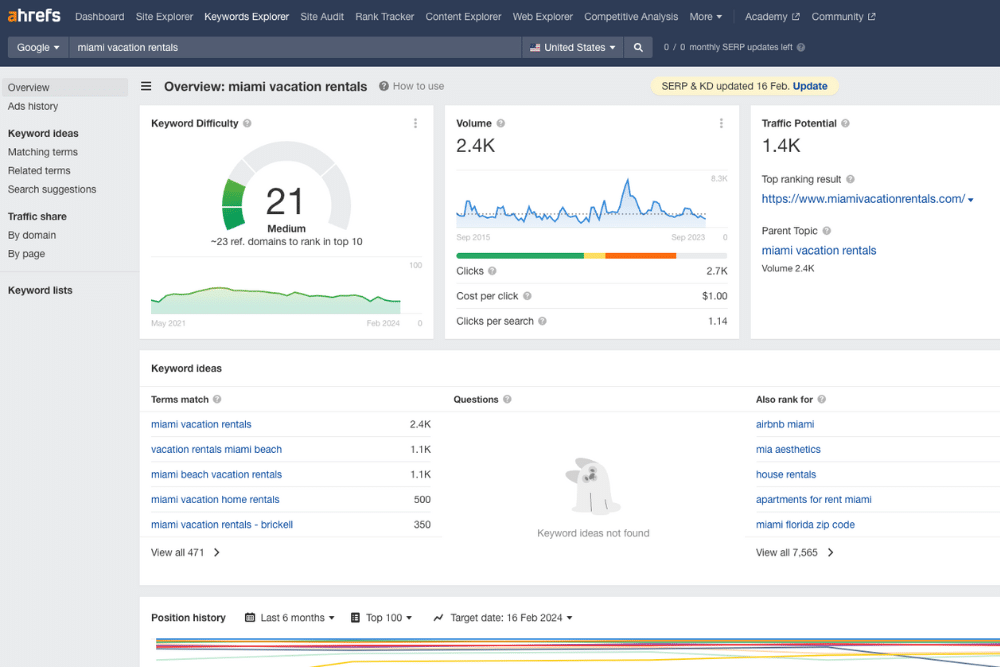
How to choose the right keywords for vacation rentals
Start by considering what people might search for when looking for a vacation rental in your area.
Popular choices may include your property type and location—think “beachfront villa in Miami” or “mountain cabin in Colorado.” But beware, these common keywords are highly competitive and often dominated by big OTAs.
To outsmart the competition, target less competitive yet relevant keywords. Long-tail keywords, phrases containing at least three words with lower search volumes, are often better.
For instance, “Miami beachfront villas with pool” might be searched less, but ranking higher for this term could drive more traffic your way.
Other things to consider when using keywords
One of the most common SEO mistakes beginners make is stuffing their content with keywords. Overdoing it risks not only alienating visitors but also drawing penalties from search engines.
In 2024, the trend is towards semantic search, too—keywords that reflect natural language and user intent. So, focus on understanding your potential guests’ needs and tailor your keywords accordingly.
SEO isn’t just about what search engines want but what users want.
If you’re stuck on how to get this right, view our guide on “Vacation Rental SEO Hacks: Keyword Research,” where we show you how to use free tools like Google Keyword Planner or Ubersuggest and help you discover key search terms that could bring relevant traffic to your website.
3. Don’t forget to E-E-A-T
E-E-A-T stands for Experience, Expertise, Authoritativeness, and Trustworthiness, and in the age of AI and mass content creation, it’s more important than ever.
It’s a framework that Google uses to assess the quality of content on websites. High E-E-A-T scores can boost your visibility in search results, making it easier for potential guests to find your vacation rental.
So, it pays to follow these guidelines when creating your content, whether that’s your web copy describing your rental’s features and amenities or a vacation rental blog about nearby experiences.
Talk about your experience
With so many people turning to generative AI these days to create content, it’s easy to get lost in a sea of information that is inaccurate or misinformed.
The easiest way to separate yourself from your competitors is to talk about your unique experiences.
For example, if you often visit local family-owned restaurants in the neighborhood, talk about your experience at those and mention your favorite dishes or insider tips your guests can follow.
Whatever you choose to write about, it’s all about offering information others can’t find anywhere else or in a format that is different and valuable.

Show off your expertise
Expertise refers to demonstrating deep knowledge about your industry.
As a vacation rental owner or property manager, you’re well-placed to offer insights into local attractions, travel tips, and accommodation advice.
Share these expert tips through blog posts and website content. Find a unique angle, though, that others haven’t already covered.
Authoritativeness comes from building a reputation within your field.
A lot of positive reviews, being featured in reputable travel publications, or having strong social media engagement can enhance your authority.
Encourage guests to leave reviews and share your content on their social channels to improve your authority. Or consider writing guest blogs for other websites about visiting your local area.
Create a sense of trust
Trustworthiness is about creating a secure and transparent online environment for your users.
Ensure your website is secure by having an SSL certificate, clearly state your booking and refund policies, and be responsive to queries and complaints.
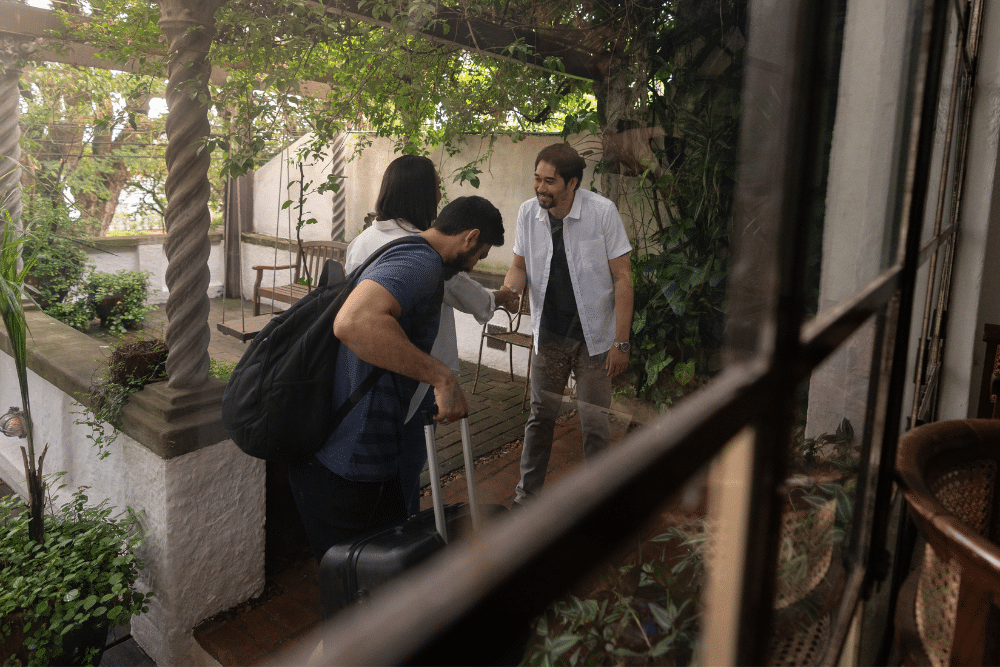
Ultimately, E-E-A-T isn’t about impressing search engines—it’s about providing real value to your audience.
By focusing on these principles, you’re not only improving your vacation rental SEO but also enhancing your guests’ experience, which can lead to more bookings and repeat customers.
4. Optimize your page titles
When you type a query into a search engine, the results you see are neatly displayed in what’s known as a search snippet.
This snippet comprises three key components:
- Meta title (the blue clickable headline)
- URL (the green web address)
- Meta description (a brief gray summary)
Of these, the title is probably the most important. It’s the first thing users see, serving as your digital ‘first impression.’ It’s what convinces users to click on your link over others, making it a powerful tool for driving traffic to your site. 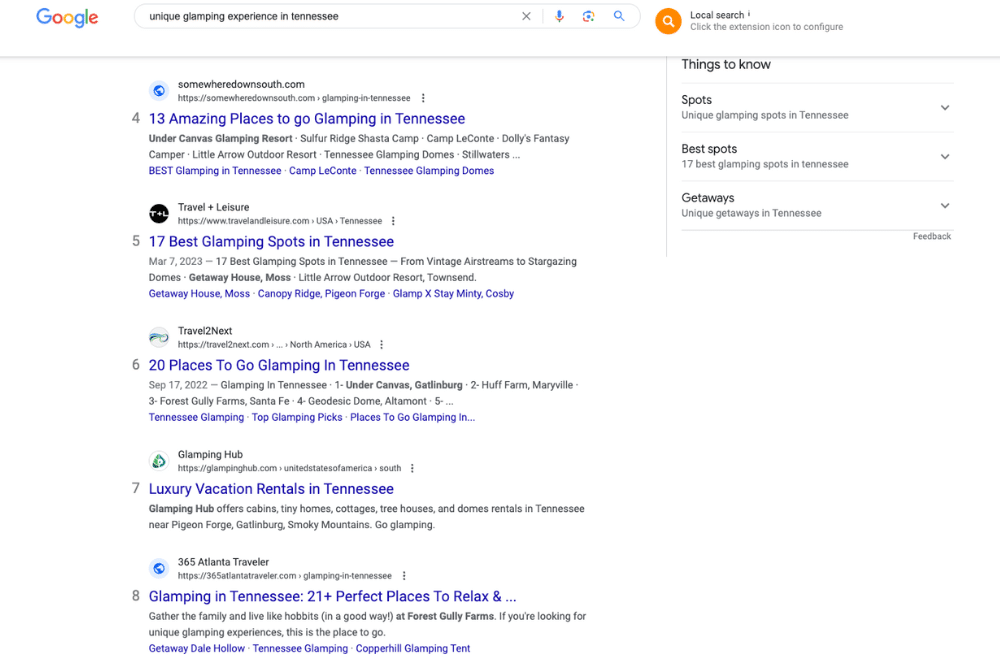
As mentioned, search engines these days favor natural language and user intent. So, how can you craft compelling meta titles for your vacation rental business?
Firstly, keep it concise and relevant. Aim for 50-60 characters to ensure your title isn’t cut off in search results.
It’s also helpful to include your main keyword naturally. For instance, if you’re offering a beach house in Malibu, use a title like “Luxurious Beach House Rental in Malibu.”
Make the title enticing but accurately descriptive, too. Your title should spark curiosity and promise value. Something like “Discover Your Dream Vacation at Our Malibu Beach House” could work.
Lastly, consider local SEO. If you’re targeting guests from a specific area, include that in your title. Remember, an optimized title is a blend of relevance, readability, and accuracy.
5. Write good meta descriptions
The meta description is the short text paragraph that is visible underneath the title in search results. It gives you the opportunity to explain your content to searchers and let them know what your page is about.
While this won’t necessarily increase your SEO rankings, a relevant, engaging snippet can influence the click-through rate, as potential guests will use it to determine if they’re interested in the page or article and want to click to learn more.
The description should optimally be between 150-160 characters to engage but not bore readers. Even so, Google measures this length in pixels—i.e. how much space the text takes up on the page.
You can verify the length of your meta description using a tool such as Google SERP Simulator. However, you shouldn’t get too stuck on that length for SEO purposes, as Google’s John Mueller confirmed the length of your meta description doesn’t matter.
How to optimize meta descriptions for a vacation rental website
Search engines expect title tags and meta descriptions to include relevant keywords and phrases that succinctly describe what that page is about.
So, include relevant keywords naturally and convey your unique selling points. Keep it descriptive yet compelling to entice clicks.
Mention special features like sea views or proximity to attractions. Lastly, include a call-to-action to prompt clicks like “learn more here” or “view rates.”
Do it for every single page of your website, and you will be one step closer to getting more travelers to find you on search engines.
6. Optimize your images
No vacation rental website is truly complete without stunning, professional photos. But beyond aesthetics, they’re also important for your vacation rental SEO.
When optimized correctly, images can boost your visibility. Here are some ways to optimize your images for SEO in 2024:
- File Size: Large files slow down your site, which can hurt your SEO and user experience. Aim to keep your image file size below 100 KB without compromising on quality. Tools like TinyPNG or Imagify can help compress your images.
- File Name: Descriptive file names help search engines understand your image content. Use clear, relevant names that describe your property, such as ‘luxury-beach-house-rental-malibu.jpg.’
- Alt Text: Also known as ‘alternative text,’ alt text is used by search engines to interpret the content of your image. It’s also an important accessibility feature—alt text helps screen-reading tools describe images to visually impaired readers. Include keywords where relevant, but make this text descriptive of the photo, like ‘beachfront house in Malibu’ or ‘bright red door of a house.’
- Image Sitemaps: If you have many images on your site, consider creating an image sitemap. It provides search engines with additional information about your images.
- Responsive Images: With more people using mobile devices, it’s important that your images look good on all screen sizes. Use responsive images to ensure a great user experience.
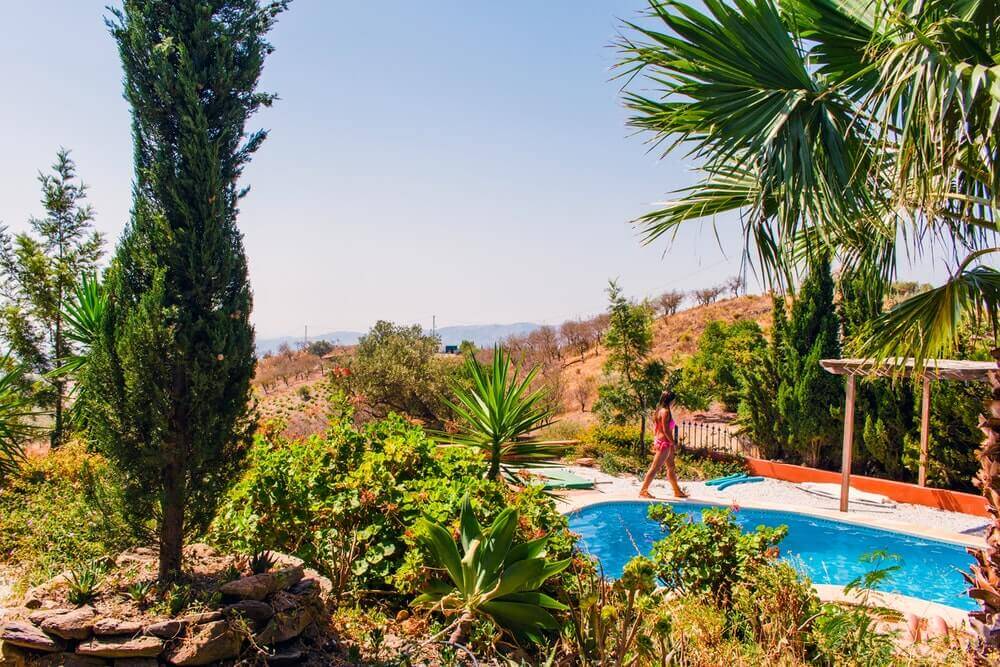
Remember, like the other factors mentioned here, image optimization isn’t just about SEO. High-quality, well-optimized images can also significantly enhance the user experience while also making your website look professional and trustworthy.
For more information, check out our article about “How to Optimize Images to Improve Vacation Rental Website SEO.”
7. Link to other internal content
SEO is about more than just choosing good keywords and writing content. An often overlooked but important part of SEO is internal linking—the practice of linking to other pages on your own website.
This serves two main purposes: enhancing user navigation and distributing ‘link juice,’ or SEO value, throughout your site.
From a user perspective, internal links guide visitors to relevant content, improving their engagement with your site.
For instance, a blog post about “Top Beach Destinations in Malibu” could link to your property listings in Malibu, helping potential guests find exactly what they’re looking for.
From an SEO standpoint, internal links help search engines understand the structure and hierarchy of your website. They distribute link equity, boosting the ranking potential of your other pages.
They also increase the crawlability of your site, ensuring search engines can access all your content.
Here are some tips for effective internal linking when optimizing a vacation rental website for SEO:
- Only link to pages that offer additional, relevant information. Irrelevant links can confuse users (and search engines).
- Be description! Anchor text should be clear and descriptive, offering insight into the linked content.
- Don’t overdo it. While internal linking is beneficial, too many links can look spammy and dilute the value. Aim for a balanced approach.
- Try to link to deeper pages on your site, not just your homepage or contact page. This helps distribute link equity evenly across your site.
By incorporating these practices, you’ll create a more navigable, SEO-friendly website that serves both your potential guests and search engines better.
8. Get backlinks
Once you’ve optimized your website internally, it’s time to focus on off-page SEO. This involves actions taken outside your website to boost its ranking in search engine results pages. A great off-page strategy is link building, which involves acquiring backlinks from other websites.
Think of backlinks like endorsements or ‘thumbs-ups’ from others online. When a reputable site links to yours, it signals to search engines that your content is valuable and trustworthy. This can significantly improve your website’s SEO performance.

Here are some effective strategies for building backlinks in 2024 that work great for property managers or vacation rental owners:
- Local Partnerships: Collaborate with local businesses, attractions, restaurants, and activity providers. Ask them to link to your site from their ‘Partners’ page or relevant blog posts.
- Guest Blogging: Write articles for popular travel blogs or local business websites and include a link back to your vacation rental website.
- Social Media Promotion: Promote your content on social media platforms. While these links may not directly influence rankings, they can lead to natural backlinking as more people discover and share your content.
The best tip for boosting your off-page SEO? Create unique, high-quality content that others want to link to. This could be blog posts, infographics, videos, or guides about vacationing in your area.
Remember, link-building, like anything in vacation rental SEO, is a long-term strategy. Prioritize quality over quantity. It’s better to have a few links from highly reputable sites than many links from low-quality sources.
9. Consistently publish new content
Google loves websites that are regularly updated with fresh content. It shows them your site is active, relevant, and providing value to users. Therefore, consistently publishing new content can significantly boost your SEO ranking and increase your visibility.
Not sure what to write about? For vacation rental owners, there are plenty of content ideas to explore. Here are some suggestions:
- Local Guides: Write posts about attractions, restaurants, events, or activities in your area. This not only provides valuable information for your guests but also helps you rank for more local keywords.
- Property Highlights: Showcase unique features of your property. This could be a scenic view, luxurious amenities, or a recent renovation.
- Guest Stories: Share experiences of past guests (with their permission). These stories can add a personal touch and build trust with potential guests.
- Travel Tips: Offer advice on packing, saving money, or other travel-related topics. This positions you as a helpful resource, encouraging visitors to return to your site.
- Seasonal Content: Create posts related to different seasons or holidays. For example, “Best Winter Activities in Aspen” or “How to Plan a Summer Beach Vacation in South Padre.”
Remember, quality trumps quantity. It’s better to publish one well-researched, engaging post per month than several low-quality ones.
Build and manage your vacation rental website with Lodgify
Optimizing your vacation rental website for search engines is more than just a strategy—it’s an investment in your business’s future. By implementing these vacation rental SEO tips, you can significantly improve your website’s visibility, drive more traffic, and ultimately increase bookings.
Don’t have a website yet? All of Lodgify’s plans come with a customizable booking website, free domain, and SEO-optimized website templates.
See the difference Lodgify can make for your vacation rental business. Sign up for a free trial today and start maximizing your online presence.


